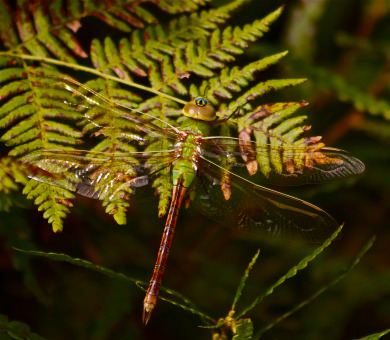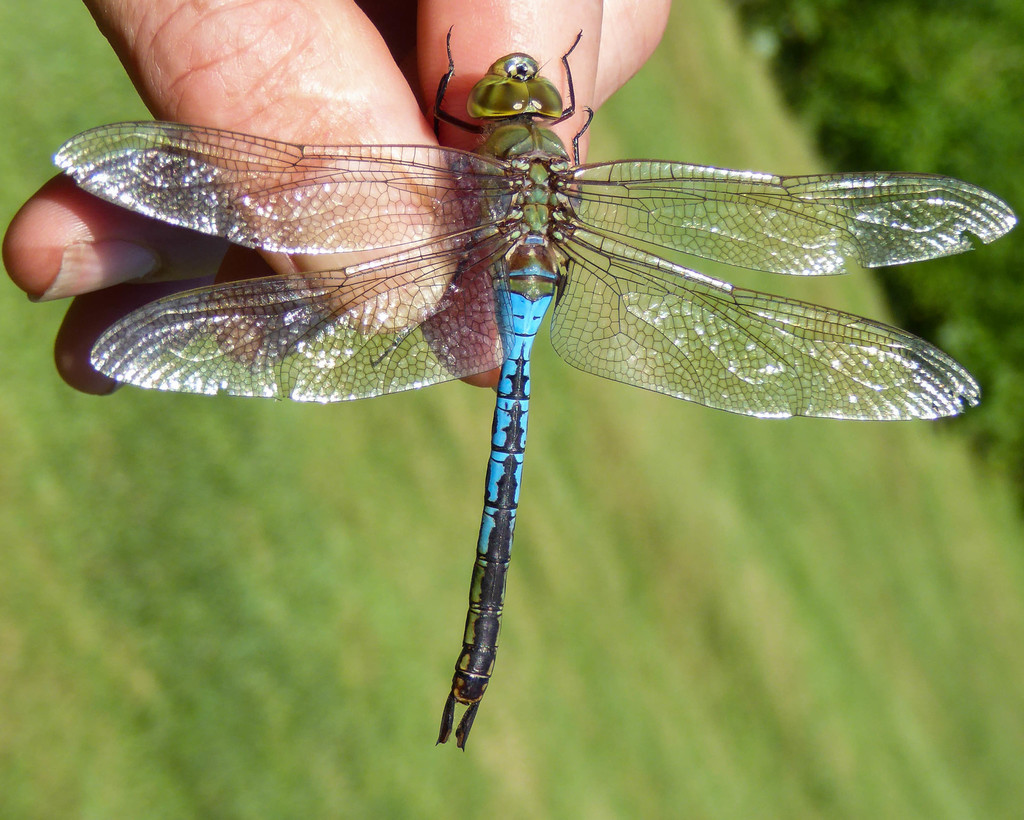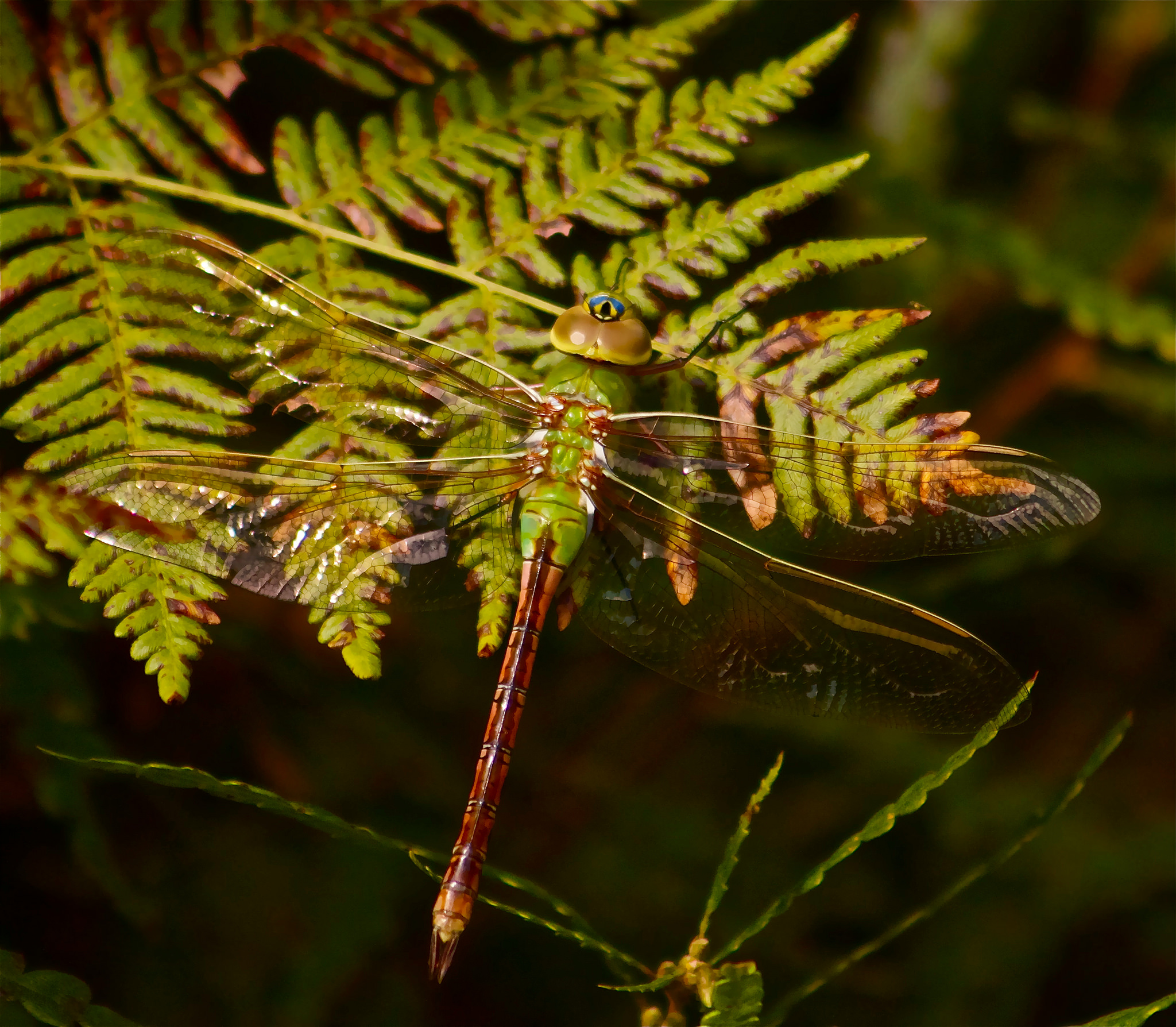WASHINGTON, DC—A team of 20 researchers and conservationists, including Vermont Center for Ecostudies biologists Kent McFarland and Sara Zahendra, have been awarded the prestigious International Research Partnership Award from Wings Across the Americas, the migratory species program of the U.S. Forest Service. Every year, the Forest Service recognizes outstanding work by agency personnel and partner organizations in bird, bat, butterfly, and dragonfly conservation. The award ceremony was held on April 23, 2019 in Washington, D.C.
The team, known as the Migratory Dragonfly Partnership, was recognized for their ground-breaking efforts to better understand dragonfly migration and promote conservation in the Western Hemisphere. For their part of the project, McFarland and Zahendra, along with colleagues from the University of Maryland and Smithsonian Conservation Biology Institute, determined how the Common Green Darner—a large, abundant dragonfly found across North America—completes its annual migration. Their recent paper published in Biology Letters described the full life cycle of this dragonfly, including an astonishing multi-generational migration of over 600 km (373 miles) on average, with some individuals covering more than 2,500 km (1,553 miles).
Understanding the dragonfly life cycle is important because of the global context. Insects are a critical driver of food webs, so figuring out why their populations are falling dramatically is important for the future success of a wide range of species. “There are massive insect declines going on around the world,” says Peter Marra, director of the Smithsonian Migratory Bird Center and one of the awardees, “so understanding these complex biological patterns is essential to determine why different populations might be declining.”
Migratory Dragonfly Partnership team members include Scott Black, Michele Blackburn, and Celeste Mazzacano from the Xerces Society for Invertebrate Conservation; Michael May from Rutgers University; Dennis Paulson from the Slater Museum of Natural History in Washington; Peter Marra, Michael Hallworth, and Colin Studds of the Migratory Bird Center, Smithsonian Conservation Biology Institute; John Abbott from the University of Alabama; Carol Lively from U.S. Forest Service International Programs (retired); Ralph Grundel from the U.S. Geological Survey; Colin Jones from the Ontario Ministry of Natural Resources; Elisa Peresbarbosa Rojas from Pronatura Veracruz, Mexico; Doug Taron of the Peggy Notebaert Nature Museum, Illinois; Kent McFarland and Sara Zahendra from the Vermont Center for Ecostudies; John and Suzanne Gregoire of the Kestrel Haven Avian Migration Observatory; Maria Aliberti Lubertazzi from the Rhode Island School of Design; and John Matthews from the Alliance for Global Water Adaptation in Oregon.
Visit the Migratory Dragonfly Partnership website and the Green Darner Dragonfly Migration page on VCE’s website for more information.
—END—
Images Available for Use
(Click on image for full resolution)



